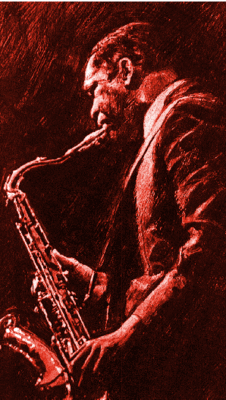
Most Jazz listeners haven't heard of George Garzone. They don't realize just how many of today's young saxophone lions have been his students. In my opinion Garzone smokes every saxophonist alive. His concept is so advanced, his sound is massive, he swings so crushingly hard, he plays any style, his artistic temperament so fine, his technique so perfect, and his ears are so large. Garzone has it all. Am I sounding like a 'Fringehead' here? Well, I AM A FRINGEHEAD! George is the MAN!!!!!!!! This guy teaches everywhere now; Berklee, New England Conservatory, The New School, Manhattan School of Music, NYU, Harvard, Longy School of Music. How does he even do it? Who knows, but he also runs ten miles every day. I believe that he will eventually be recognized for changing the course of Jazz history, just for the sheer number of important saxophone students that he's taught. If you haven't heard him by now, do yourself a favor and get your hands on some of his recordings. His free trio 'the Fringe' has been playing together every week for over 30 years and has several CDs out. Every time they play it's like one big mind meld. He has a great CD out on NYC Records with Lovano called 'Fours and Twos', a Stan Getz tribute called 'Alone', a quartet recording called 'Moodiology', he's on several of Joe Lovano's CDs, and he is one of NYC's most in demand sidemen. I had the great privilege of studying with George for several years and performing with him several times, he even let me sit in with the 'Fringe'. Eventually he WILL take over the world........














